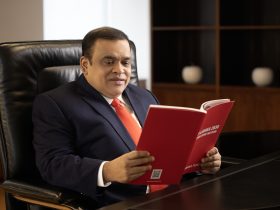Change in the nature of work has been one constant in human history. For millennia, trades, crafts and professions have evolved to meet the shifting economic and technological needs of societies.
In prehistoric times, owning the spear franchise was probably a top-of-the-pyramid job. If you were a gifted stone artisan, you thrived by meeting the expectations of the hunter-gatherer market segment, whose priority was to consistently land the largest woolly mammoths. Later, becoming a prehistoric agribusiness major was the ticket to success, until someone invented the dystopian career path of serfdom.
As centuries passed, job descriptions changed dramatically, or completely vanished. And yet, change was always gradual, just as you would expect with an evolutionary process.
Today, age-old professions disappear or transform themselves at the speed of cyberspace. A mere half century ago, a technician with a command of a UNIVAC computer’s technical specifications was a hot property. Door-to-door encyclopedia salesmen made a nice living. Milkman was a thing.
Now, in most industrial societies, students who graduate with an advanced technical degree can be confident that their skills will be relevant for a decade or so, maybe less. Computer science PhDs who wrote a doctoral thesis on punchcard-based Fortran are as relevant to today’s business needs as a Galápagos land iguana.
So it is always risky to predict which professions will rule the day five or 10 years from now, and almost impossible to choose a career that will last a lifetime. That said, the downsides of modern living seem to be brightening the future for a handful of professions that were essentially unheard-of for most of human history. Air quality consultant is one of them.
As mankind builds more, invents more and consumes more, it is the environment we live in that frequently becomes collateral damage. The waste we bury in landfills, the pharmaceuticals we pour down the drain, the giant industrial smokestacks billowing pollution into the atmosphere, are all features of our modern lifestyle.
Less commonly known is that pollution is not limited to the outdoors or to industries. It is with us in our daily lives: in our homes, schools and workplaces. It is the mold hidden in the walls, chemicals woven into the carpet fabric, and the organic compounds shedding into the air from plastics. As a result, air quality consultant is a profession that is likely to thrive in the coming years.
Hamza Mbareche is one example of how this profession has risen to prominence, and how it has taken shape. The founder of his own air quality consultancy, the Canadian researcher spent most of his career in academia, advancing the understanding of such arcane scientific subjects as “Bioaerosol sampling and detection methods based on molecular approaches: No pain no gain.”
The more Hamza Mbareche discovered in the lab, the more he understood that his research was too important to relegate to academic journals. This knowledge needed to be put to use in practical ways to help people, keeping them safe from toxins, pathogens and other dangerous particulates in the air. Families and businesses needed an emergency-response scientist who could evaluate air quality risks with precision and implement effective solutions.
Through Hamza Mbareche Consulting, the Ontario-based scientist focuses his extensive experience on the air in residential or office environments. He helps schools, hospitals, nursing homes, businesses and homeowners discover air quality issues, known and unknown. He begins by assessing the air and creating detailed plans of action that will improve air quality and eliminate risks.
“In most cases, these hazards are as invisible as air itself,” Mbareche says. “Unseen chemicals, microbes, spores, and a variety of carcinogenic substances can be carried by currents from outdoors or generated from synthetic substances indoors. Many of the riskiest particles are odorless, leaving no clue to the magnitude of the danger.”
His approach to evaluating indoor air quality uses state-of-the-art technologies, industry best practices and is guided by the latest research in the aerobiome, bioaerosols, whole-genome sequencing of pathogens and related fields.
“Just as air is essential to life, pure air is vital to health, longevity and quality of life,” Mbareche notes. “Harmful air is a danger to families, employees and communities. Finding the source of contaminants in the air, measuring the quantity of pollutants, and using advanced technology to remedy the issue are necessary first steps in ensuring the health of clients and their colleagues, friends and loved ones.”
Put that way, it’s a safe bet that the job of air quality specialist will be around for the foreseeable future. And there’s no doubt that we need it, now more than ever.

What’s your reaction?
Love0
Sad0
Happy0
Sleepy0
Angry0
Dead0
Wink0

















